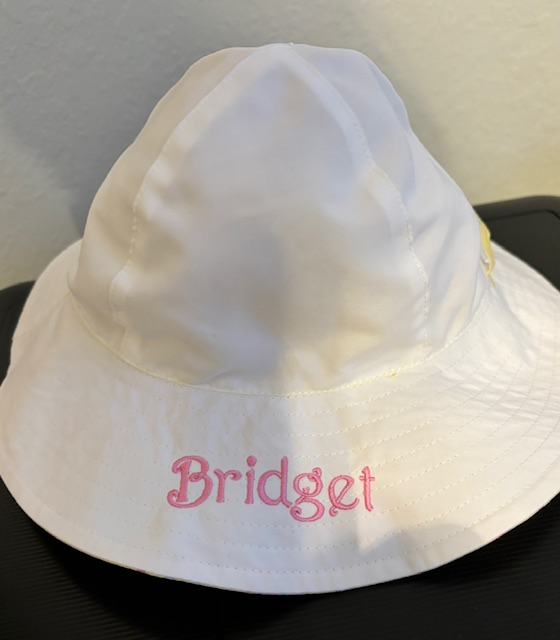Customized Lab Coats with Embroidery for Medical Professionals
Customized Lab Coats with Embroidery for Medical Professionals
Blog Article
The Art of Customized Needlework: Opening the Secrets to Creating Distinct and Unforgettable Layouts
The keys to producing customized embroidery layouts that mesmerize the eye and leave a long lasting impression lie in a fragile equilibrium of method, creativity, and focus to detail. As we delve right into the world of custom needlework, we discover the nuanced interplay in between thread option, sew complexity, and design customization that elevates a plain garment to a work of art.
Choosing the Right Needlework Threads
When choosing embroidery threads, what essential elements should you consider to make sure the best outcomes for your personalized styles? The choice of needlework thread is vital in figuring out the final result of your embroidered layout.
Additionally, the weight or density of the thread plays a significant function in the look of the needlework. Thicker threads can include measurement and structure to your layout, while finer strings are perfect for detailed details and tiny text. In addition, considering the color fastness and washability of the string is critical to guarantee that your personalized designs keep their quality and vibrancy with time. By very carefully reviewing these elements and choosing high-quality threads that fulfill your particular demands, you can boost the aesthetic appeal and durability of your stitched productions.
Checking Out Different Stitch Methods
To explore the realm of 'Exploring Different Stitch Strategies', one should understand the complexities and subtleties that each stitching method offers the art of embroidery. Various stitch techniques not just include visual interest yet also add to the total texture and measurement of the design. One popular stitch technique is the satin stitch, which entails closely stuffed parallel stitches to produce a smooth and glossy surface, perfect for filling out shapes and producing strong outlines.
On the other hand, the backstitch is a versatile strategy typically made use of for describing and including fine information. It includes stitching backwards to develop a solid line of embroidery. Additionally, the French knot stitch adds a tactile element to layouts, ideal for developing textured accents like flower facilities or decorative touches.
Discovering different stitch techniques enables embroiderers to play with light, darkness, and depth within their layouts, elevating the aesthetic appeal and artistic high quality of their embroidery projects. By mastering various sewing methods, one can unlock unlimited possibilities for developing unique and remarkable personalized embroidery pieces.
Incorporating Personalized Layout Components
Having explored the ins and outs of various stitch methods such as the satin stitch, backstitch, and French knot, the focus now shifts in the direction of integrating customized style components in custom needlework projects. Customized layout elements play an essential duty in making needlework projects really one-of-a-kind and memorable.
Another means to incorporate personalized style elements is by including signs or themes that hold special meaning to the recipient or show their rate of interests and individuality. Integrating a favorite blossom, animal, or hobby-related sign can make the needlework design more purposeful and tailored. Additionally, choosing colors that reverberate with the recipient or straighten with the intended motif can better improve the customization of the needlework job.
Mastering the Art of Color Coordination

One trick facet of shade coordination is comprehending color theory. This includes recognizing how various colors communicate with each other, the feelings they convey, and how they can be integrated to develop aesthetically enticing designs. By using color theory principles, embroiderers can create unified color schemes that boost the overall appearance of the layout.
In addition, paying attention to comparison is essential in color coordination. Utilizing contrasting colors can aid particular components of the layout pop, boost legibility, and develop an aesthetically vibrant needlework piece. By mastering the art of shade sychronisation, embroiderers can raise their designs and develop memorable pieces that resonate with customers and customers alike.
Enhancing Texture With Advanced Embroidery Stitches

French knots, for instance, are best for including tiny, raised dots to your style, simulating the appearance of grains or developing a textured surface area. Bullion knots, on the other hand, can be utilized to develop twisted, ropelike components that include an extravagant feel to the needlework. Seed stitching entails small, scattered stitches that can fill up in locations with a speckled appearance, while turkey work develops cosy, dimensional accents reminiscent of animal hair or foliage. Exploring with these advanced embroidery stitches allows you to press the boundaries of typical embroidery and create truly distinct and visually enticing textures in your styles.
Final Thought
In conclusion, the art of custom-made embroidery involves a mix of selecting the ideal threads, discovering various stitch methods, including personalized design aspects, grasping color control, and enhancing structure with innovative stitches. By understanding and executing these crucial elements, embroiderers can create unique and remarkable styles that display their creative thinking and skill. Embroidery lovers can open the secrets to creating beautiful and bespoke pieces that stand apart and leave a lasting perception.
Report this page